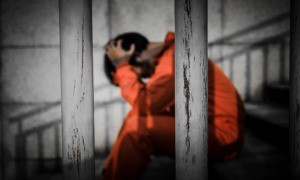Congress passed an omnibus appropriations package for most domestic spending in 2010, and President Barack Obama is expected to soon affix his signature to the bill. In a less tumultuous time, the administration might take issue with the fact that the bill is bloated with thousands of earmarks. Three of his fellow Democrats voted nay on the bill in part because the pork jacked up the price tag (total: $1.1 trillion): Sens. Evan Bayh (Ind.), Russ Feingold (Wis.) and Claire McCaskill (Mo.).
But the president has too many other irons in the fire between war, health care and job creation. And you have to hand it to Congress and the president, this is the fastest they have arrived at a domestic spending agreement in recent memory.
Here is a look at some of the appropriations related to juvenile justice and the Office of Juvenile Justice and Delinquency Prevention:
Second Chance Act: The bipartisan bill funds services for juvenile and adult prisoners returning to their home communities, and was signed in to law by President George W. Bush in April of 2008. The act funds some job training and education services through the Department of Labor, and other services through the Justice Department.
On the Justice Department side, Congress did not start the act with a bang last year, dedicating just $25 million. That figure quadrupled to $100 million for fiscal 2010, while the Labor Department appropriation is also around $100 million.
The Justice funding includes $7.8 million for “family-based substance abuse treatment.” Look for that figure to rise over the years if Congress and the feds are serious about investing in what works, because the early evidence from the Pathways to Desistance research is that family-involved drug treatment is one of the few things that clearly lowers the chances of reoffending among juveniles convicted of serious offenses.
Mentoring: $100 million, up from $80 million last year. That’s staggering, when you consider this was only a $10 million pot in 2007.
Community-Based Violence Prevention Initiative: $10 million for the new project requested by President Obama in his 2010 budget. (He asked for $25 million). This could pave the way for PROMISE Act funding, if and when that bill ever gets signed by the president.
Title V: Funded at $65 million. $60 million goes to three projects (tribal programs, gang resistance and enforcing underage drinking laws) completely unrelated to what Title V was originally for: sending grants to states to use at their discretion. That leaves $5 million for the state. Not sure whether it’s more sad or good that this is more than double what states got last year.
Earmarks: Porking is down this year, no question. Taxpayers for Common Sense identified just north of 5,000 earmarks totaling $3.9 billion in the omnibus bill, and the current number of total earmarks for all 2010 spending bills adds up to $6 billion. That is well below the administration’s goal of $7.9 billion, the amount earmarked in 1994. But the defense spending bill has not been finished, and the odds of that coming in below $1.9 billion in pork are very low.
Did the easing off of earmarks happen in youth-relevant pots? Quite the opposite, it would seem. JJ Today counted 277 OJJDP earmarks in last year’s appropriation bill; there are 319 in this bill. The list of earmarks in the Byrne Discretionary Grants was even longer, and many of those are also JJ-related.
At OJJDP, the earmarks eat up every single cent of the $91,095,000 in Part E (challenge and demonstration projects) grants that was appropriated by Congress. The strange funding total for that account leads JJ Today to one conclusion: Congress just put together a list of earmarks, added it up and appropriated that amount.
Here’s a suggestion for OJJDP, should it want to actually craft some sort of discretionary account of its own: Push the dozens of earmarks for mentoring projects into the $100 million mentoring account, and use the money dedicated for those projects in Part E to pay for an OJJDP-conceived venture.
Is that legal? Someone tell us. But really, is it necessary to carve out earmarks for mentoring when there’s a hundred million dollars already set aside for it?
Some notes on a few earmarks that jumped out:
— Strictly based on dollar amount, the $2.5 million for Boys & Girls Club of Hawaii (for rural youth crime prevention) and the $2 million to West Virginia outfit Community Connections (for a youth training initiative).
— The big newcomer to the Justice earmark trough is West Coast Chabad, a Jewish nonprofit with a strong presence in California. Four of its branches (in Los Gatos, Tarzana and Riverside, Calif., and in Las Vegas) got earmarks for drug prevention programs.
— The following groups need to send a hefty fruit basket to their lobbyists and/or government relations personnel:
Starr Commonwealth, Michigan and Ohio (four earmarks, totaling $1.2 million).
Bolder Options, Minnesota (three justice earmarks for $500,000).
KidsPeace, Pennsylvania (three earmarks, totaling $700,000, for therapeutic foster care in Florida, New Jersey and New York).
Enough is Enough (three earmarks adding up to $660,000).
Ohel Children’s Home and Family Services, Brooklyn (four earmarks for a total of $1 million).
— Lots of earmarks for mentoring, and lots of earmarks for residential program providers. You can be sure that a lot of those residential providers badly needed the federal boost this year, as some states cut way back on their use of institutional and residential care.
— Ramsey County Community Corrections (St. Paul, Minn.) got $560,000 for the Juvenile Detention Alternatives Initiative (JDAI), a project the county works on in partnership with the Annie E. Casey Foundation. That’s worth mentioning because we can’t remember a JDAI site ever landing an earmark.





























